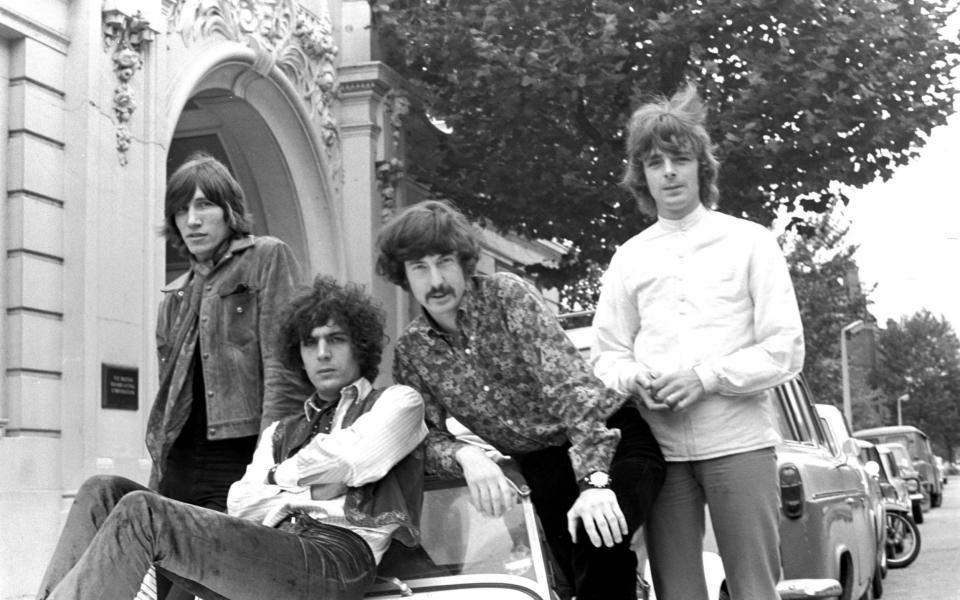Crazy Diamond: how LSD ruined Pink Floyd's fragile genius Syd Barrett

Syd Barrett is the lost boy of British pop. A dazzling original who saw and heard differently to everyone else, he went through the looking glass in search of his psychedelic vision, and never came back. Barrett’s story is a tragic saga of glory and madness, part daring adventure, part cautionary tale. By the age of 23, he had changed music forever – and it had destroyed him.
Barrett’s fame principally rests on his role as the lead guitarist, singer and songwriter for Pink Floyd. Although he made only three singles and one album with the progressive rockers, it was Barrett’s brilliance that set them on their path and haunted them ever after.
Born Roger Barrett in Cambridge in 1946, into an artistic middle-class family, he played guitar and piano and dreamed of becoming a painter. Handsome, charismatic and sociable, Barrett was popular on the local music scene, where he picked up the nickname Syd after an unrelated Cambridge jazz musician, Sid “The Beat” Barrett. “He was physically beautiful, witty, funny,” says David Gilmour, who befriended Barrett in 1962. “He was much loved by everyone around him.” The two went busking in France, where Barrett would make up songs on the spot. “Syd had a natural poetic gift, he’d effortlessly knock out stuff.”
Some of those early songs turned up on Barrett’s later solo albums and demonstrate an affinity for nonsense rhymes, a fascination with the sound of words for their own sake. Others played with blues forms. Folk songs, Shakespeare, fairy tales, the mysticism of the I Ching and the dream logic of Lewis Carroll all went into the mix, whimsy balanced with formality.
In 1964, Barrett enrolled at the Camberwell College of Arts in London to study painting, and reconnected with another childhood friend, Roger Waters, eventually joining his rhythm and blues covers band, The Tea Set, with Waters on bass, Rick Wright on keyboards and Nick Mason on drums. It was Barrett who renamed them Pink Floyd (after two obscure bluesmen, Pink Anderson and Floyd Council). The group began improvising soundscapes to accompany experimental light shows around the same time that Barrett started taking LSD on an almost daily basis.
Pink Floyd’s hallucinogenic rock made them the darlings of London’s underground psychedelic scene. Barrett was still only 21 when, in 1967, they released their mind-blowing debut album, The Piper at the Gates of Dawn, 10 of its 11 songs written by Barrett. But he was unable to enjoy its success. The drugs had unloosed something inside him: gone was the outgoing personality, replaced by a thousand-yard stare. Live on stage, he would detune his guitar and forget to play or sing at all.
Barrett’s final songs for Floyd reflect his disintegrating mental condition. The bewildering Jugband Blues (his only composition to make it on to the band’s second album, A Saucerful of Secrets) finds Barrett wondering “Who could be writing this?” Scream Thy Last Scream and the self-excoriating Vegetable Man were deemed too disturbing for release.

By the end of 1967, Gilmour had replaced his old friend, who was dropped from the band’s line-up, apparently without his noticing. Rick Wright, who shared a flat with Barrett, recalled telling him he was popping out for cigarettes, only to slip away and play a gig. When he returned, hours later, Barrett was in the same position, staring into space. “Did you get the cigarettes?” he asked.
Barrett went on to make two solo albums in 1970, The Madcap Laughs and Barrett, with Gilmour producing and members of Floyd contributing. Their torturous recording sessions yielded some of the most beautifully strange songs in pop history, dreamscapes drifting free of meaning. They marked the end of Barrett’s career; his entire catalogue runs to only 54 songs. In an increasingly distressed state, Barrett retreated to his family’s semi in Cambridge, where he lived as a recluse until his death from pancreatic cancer in 2006.
Without Barrett, Pink Floyd evolved into something less eccentric and frazzled, building on the more cerebral songwriting of Roger Waters and Gilmour’s musicality. The magisterial Shine on You Crazy Diamond stands as the band’s tribute to their erstwhile leader: “Come on you raver, you seer of visions/ Come on you painter, you piper, you prisoner, and shine”.
Pink Floyd were mixing the song at Abbey Road studios in July 1975, when an overweight figure with shaven head and eyebrows shuffled in and sat down. It took some time before anyone recognised him. He listened intently before declaring the song sounded “old.” It was the last any of them would see of Syd Barrett.
The Lyrics of Syd Barrett are published by Omnibus at £14.99 on Thursday


